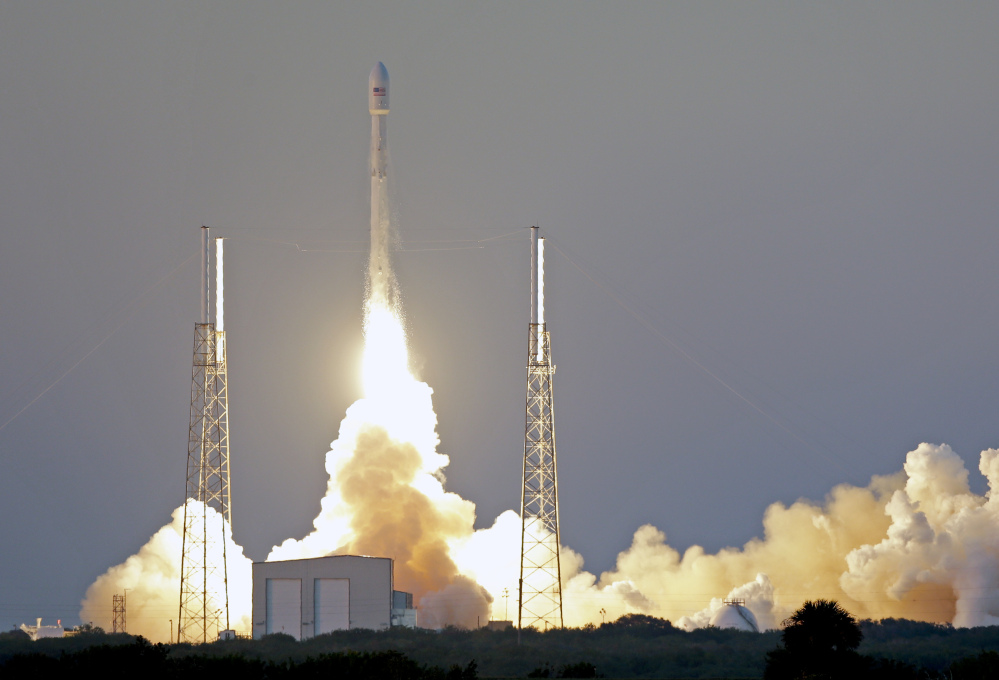CAPE CANAVERAL, Fla. — SpaceX’s Dragon 9 rocket blasted off Wednesday into a clear sky backlit by a setting sun, sending a satellite to monitor solar storms that can wreak havoc on Earth’s power and communication systems.
The 6:03 p.m. launch from Cape Canaveral Air Force Station came on SpaceX’s third try this week, and Florida provided a postcard-quality environment for launch.
However, out to sea, the weather was not cooperative. Because of heavy seas out in the Atlantic Ocean, SpaceX canceled its plan to try to land the used first stage of the rocket on an unmanned drone barge.
The rocket is carrying the Deep Space Climate Observatory, or DSCOVR, into space. That satellite eventually will travel almost a million miles from Earth and set up to follow the planet around the sun. It will monitor solar storm activity.
The refrigerator-sized satellite will help monitor space weather, particularly such events as geomagnetic storms caused by changes in solar wind. It will give scientists more detailed and reliable reports on solar storms that could affect Earth.
Initially, the Falcon 9 will park the satellite at a height of about 125 miles above Earth. NASA intends to slowly power it out much farther, eventually reaching a spot almost a million miles out, or roughly four times the distance to the moon.
At that point in space, the gravitational forces of the sun and Earth are in equilibrium, allowing the satellite to follow the Earth around the sun while keeping a constant watch on both the sun and the Earth’s sunny side.
The satellite was first built for a previous, scrapped mission and repurposed when NOAA concluded it was perfect for its needs. Initially built in 1998, it was intended to observe Earth only, in a program proposed by then-Vice President Al Gore to monitor global warming.
That program was scrapped by the administration of President George W. Bush before the satellite was deployed. NASA put it in storage for many years before NOAA asked that it be brought out, reconfigured and made available for this mission. The total cost, including this launch, is about $340 million.
It will be replacing a NOAA satellite in roughly the same spot in space called the Advanced Composition Explorer, which was prone to signal disruptions from the very solar storms it was deployed to cover.
Send questions/comments to the editors.



Success. Please wait for the page to reload. If the page does not reload within 5 seconds, please refresh the page.
Enter your email and password to access comments.
Hi, to comment on stories you must . This profile is in addition to your subscription and website login.
Already have a commenting profile? .
Invalid username/password.
Please check your email to confirm and complete your registration.
Only subscribers are eligible to post comments. Please subscribe or login first for digital access. Here’s why.
Use the form below to reset your password. When you've submitted your account email, we will send an email with a reset code.